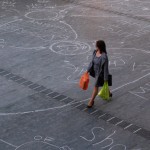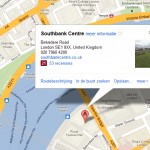Back home after having a thumping good time in London - not enough energy left…
Lockdown
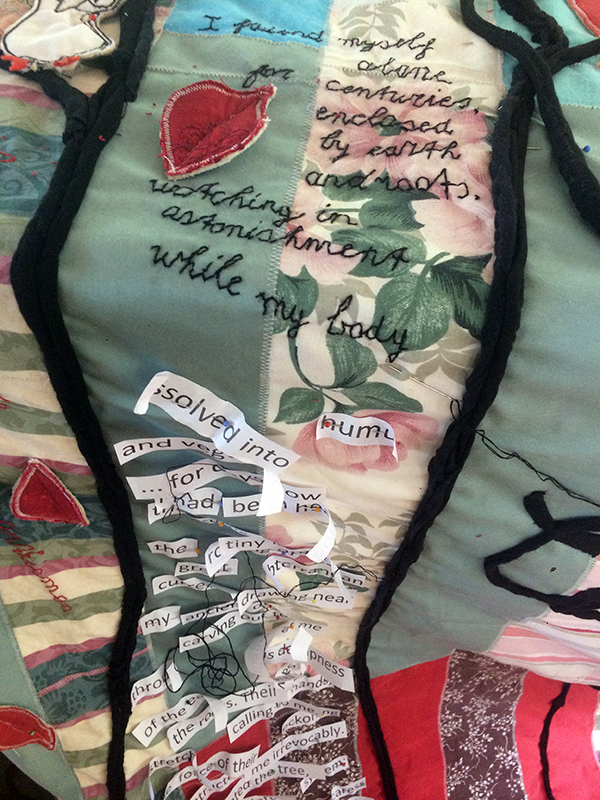
I’ve been spending the corona-lockdown-time on two things: 1. learn how to train students via Zoom, the online tool that skyrocketed these last few months, and 2. creating a big tapestry for an exhibition that is to take place in Zaltbommel this summer.
As for Zoom-learning, it was quite a challenge. I took my first steps with trepidation, but found my feet very quickly – started to enjoy distance teaching, even. First focus was to become fluent with Zoom technology, which took me about half a day, it is so intuitive. Stable, too – can’t praise it enough. Then I needed to adapt my teaching style (smaller hand gestures, simpler examples, more breaks, being more directive) which was fun to find out about. All in all I’d like to keep distance learning in my repertoire.
As for tapestry – I was challenged by a friend to contribute to an exhibition where the slots for painting and drawing were pretty much filled. Being inspired by Mounira Al Solh who works with embroidery, also by the magnificent church where the exhibition will be shown, I decided to go out on a limb and make a big tapestry showing Paradise, targeted size three by two metres – never done a solo work that big before. To be seen at all in such a big church it needed to have size – of course the squares we’ve drawn games on with big crayons were huge, and the spider web in Vlieland and the Galaxy carpet in the Hague were big, but those were made with groups of people. Which was out of the question in corona times. So because it was to be big I took an unprecedented step – I did design drawings beforehand. This I hardly ever do – I prefer to find out about the work while making it. Which means that I usually have a lot of re-work, workaround, things to bemoan and start over on. Not so – or almost not so- this time: I did drawings, by hand and later on the computer, and made decisions about the work based on these drawings. Unprecedented …. Must admit that I did a fair amount of rework, but that was courtesy of the material, not the design. Fabric had a life of its own ….
To document my process I’ve made photo’s of the design drawings and the intermediate stages of the tapestry itself. These are shown below, not necessarily in order of appearance but in order of the thing I was finding out about. Here goes:
Background: to be divided up into four squares or in three panels? The panels won, because they allowed me to create a tryptych, mine represents chaos (beginning, left), the act of picking fruit from the tree of knowledge (present, middle) and the world of woes and work we have now (future, right).
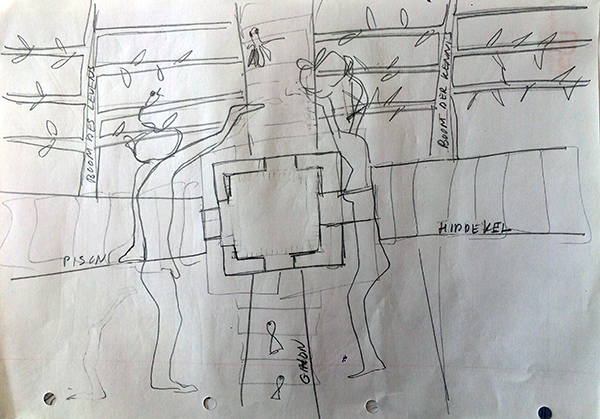
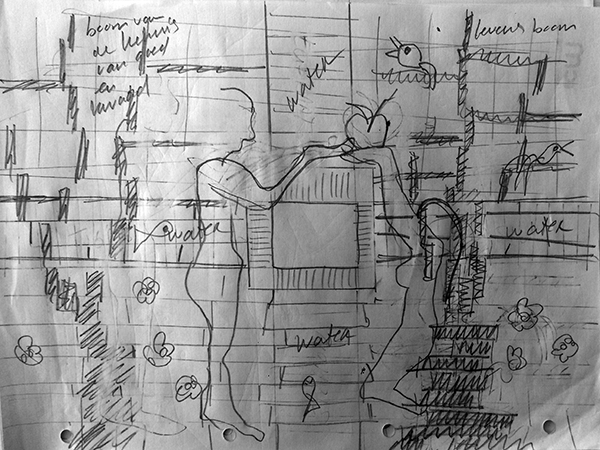
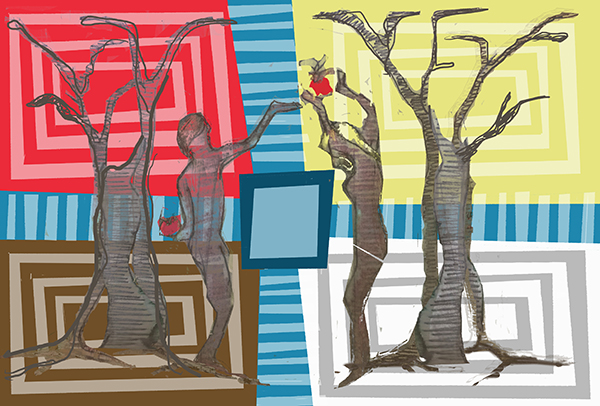
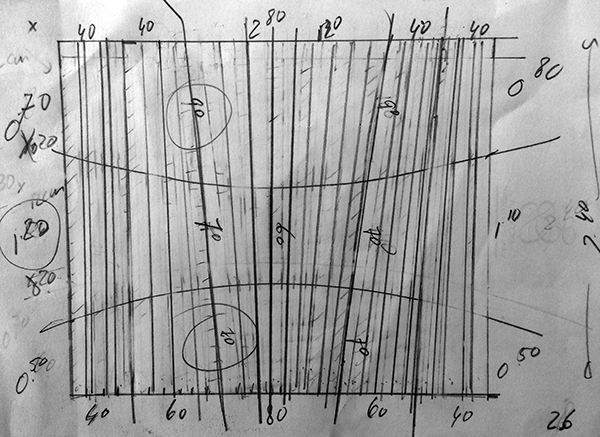
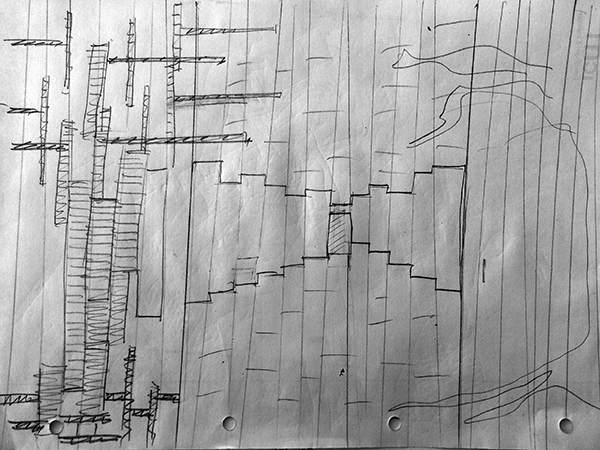
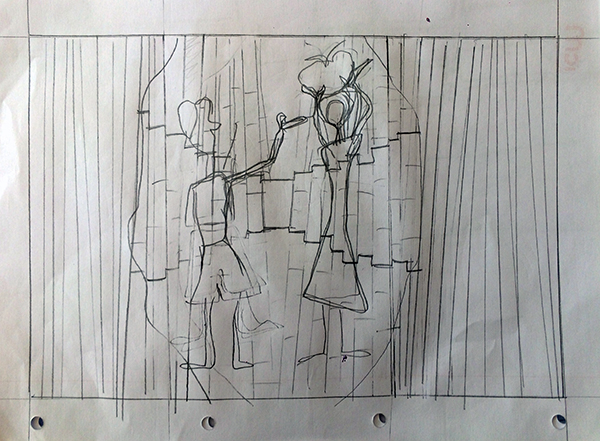
Abstraction: I started with the idea of the tapestry being very abstract. I think this was a legacy from the days I was interested in quilts – working with fabric meant quilt meant abstract. I gradually came around to the idea of the background being abstract (a rose garden, which is my idea of Paradise) and the foreground being a non-abstract line drawing. The thing then ended up having a Disney-like quality. I think this happened because I worked with black lines for the drawing. I resisted the disneyfication for a while, but now like it very much! I came to see that Genesis is about storytelling, and what tells a story like a good Disney movie? The story of Paradise has photogenic people, lots of cute animals, greenery, even a bad guy … in my case it is bad guys because I gave Adam his own snake to whisper in his ear.

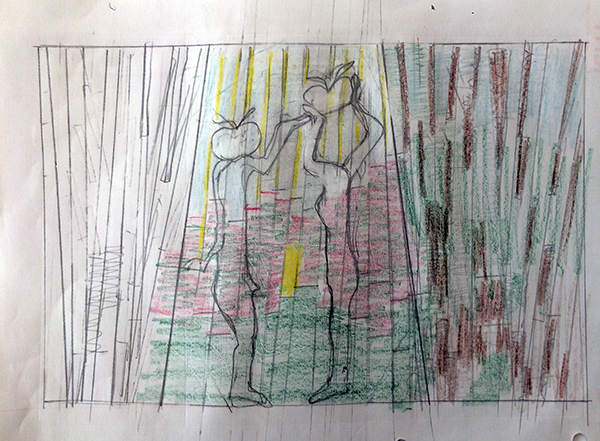

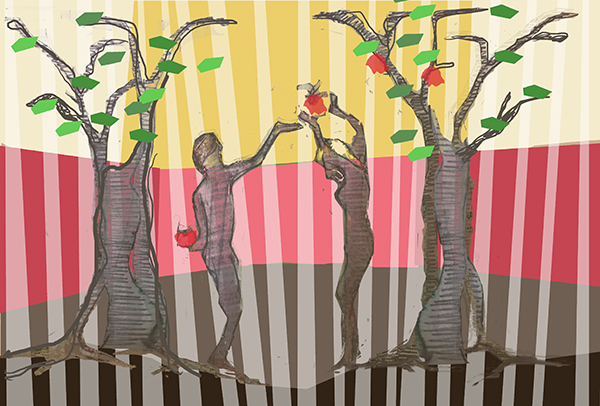
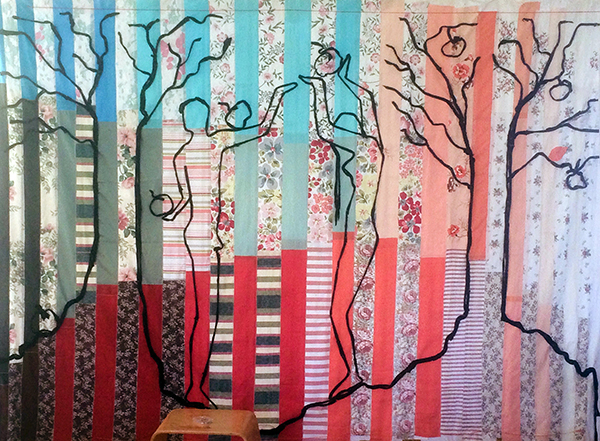
Materials: As there was no shopping for materials I had to use the stuff I already had. A happy expedition through the fabrics I’d been saving for a rainy day gave me more than enough stuff to work with. Also I like the idea of a Paradise made of second hand materials, fabrics that were once part of people’s lives. I used bedlinnen for the back, and I highlight the the spots and marks on them. They are a homage to all those women that bought and used and washed and dried and ironed and folded and stored these sheets, and slept and dreamt and sweated and cried on them as well.
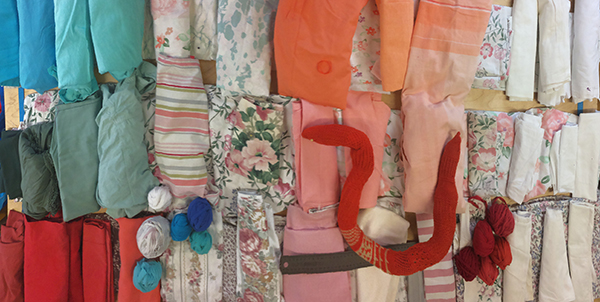
Front and back: I realised when I started sewing on black threads that I should give attention to the back of the tapestry – it should have its own interest – for both back and front will be visible during the exhibition. So I spent extra time – a lot of time – to make the back have its own quality.
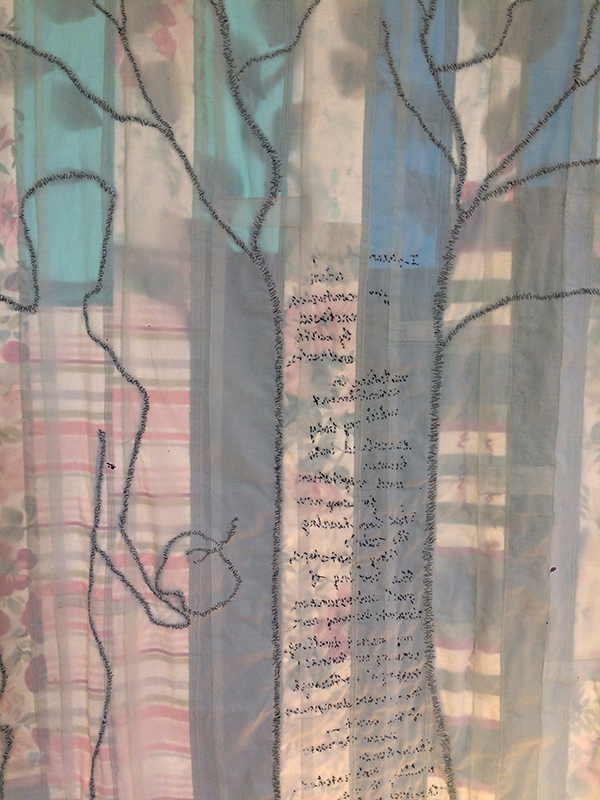
Translucent: Because I hung the strips of cloth in front of a window, I came to appreciate the see-through effect of cotton on cotton. This meant that I decided to forego the quilt layer inbetween, which turned out to be a fortuitous decision. One of the best things in the finished work is that the flower garden and the drawing from the front shine through to the back – if the lighting is right which I hope in the church it will be. Also the back shines through to the front, giving the whole a stained-glass quality wich is beautiful – and significant.
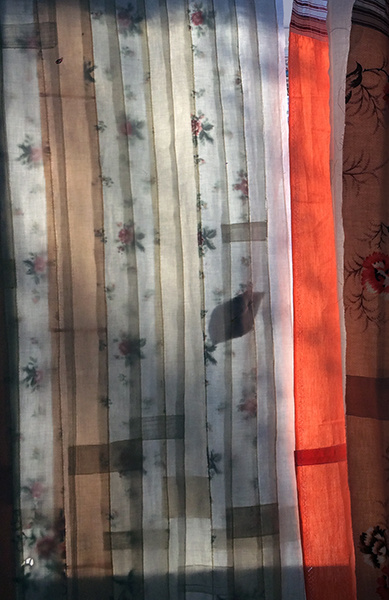
Content: I wanted the tapestry to reflect the time it was made in – I listened to the news on the corona outbreak while working on it. This is why Adam and Eve are stockpiling apples – they did not have toilet paper, canned goods or dry goods so in my fantasy they gathered apples. Seven apples to reflect the number seven which means ‘a lot’ in the bible. I’ve also given it a small feminist twist – in the earlier drawings, Eva was kneeling, this I found insufferable, so now Eve stands up, is bigger even than Adam if she would but stretch out and stand up straight…. Also they are both tempted, by a male and female snake …. all animals in the tapestry are duo’s, a hint towards the story of Noach and the ark that follows Paradise. I now have snakes, owls, birds of paradise and mice. The mice being a self-portrait – my family used to call me ‘little mouse’ for being quick and curious. I have workshops planned where participants can add animals, flowers or text to the tapestry …. hope this will work …
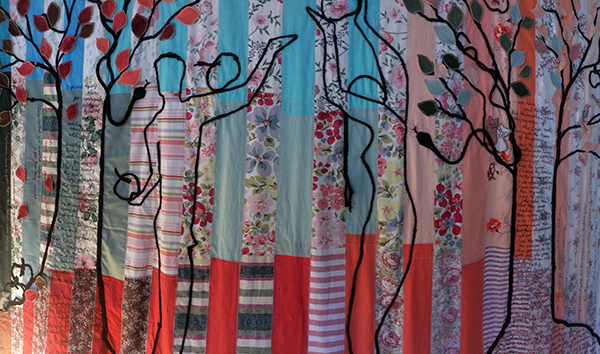
Three-D: I made leaves and animals that are separate little items, quilted separately and then sewn on. Which gives an almost threedimensional effect. And the room to play around with the placing of items. And room for other people to add their thing – will be giving workshops ….
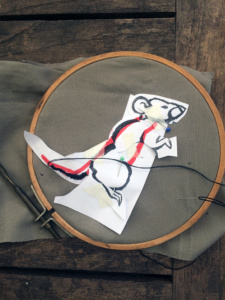
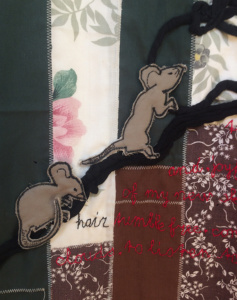
Dichtomies: this is what the book of Genesis is all about – the differences between day and night, man and woman, good and evil. I clocked a goodly number of dichtomies for my tapestry – front and back, before and after, spring and fall, man and woman, light and dark, outline and detailed, black and white, hand-made and machine-made, straight and curvacious, clean and smudged,
Text: I did not plan for text but heard myself say to a visitor that of course text would be added. Turned out that I had ideas for this – where did they come from? It was a good, though time-consuming idea. Time I had, also because of Corona. Good, because it saves the tapestry from being too Disney, and it means an extra layer on top of the visual. The tree of life now has a quote from Gioconda Belli’s The Inhabited Woman, where a woman comes to life via a tree. The Tree of Knowledge has the fruit-picking story from the King James version of Genesis. The left hand panel has chaos quotes, the right hand panel has world-of-work quotes. The middle I will keep bare of texts, this is where the action of the story is.

| « Kicked into gear | <-- previous post | next post --> | Woven » |
|---|
